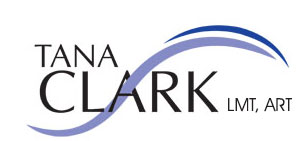How to Completely Heal Hamstring Injuries with
Deep-Tissue Massage and Active Release Techniques
Bend, Oregon

Hamstring pain can come from the hamstring tendon, hamstring muscles, or both.
Hamstrings are tight in most people whether you’re an athlete of a desk-sitter. Tight hamstrings are a form of hamstring injury that restricts the soft-tissue from working at 100%. Left overly tight, hamstrings easily tear and refer pain to the buttocks, knee, and up the back.
What causes tight hamstrings? Hamstrings enable us to bend the knee and extend the hip. Tight hamstrings and faulty bio-mechanics in that area can be caused by many things, such as activity on worn out shoes, excessive exercise, or improper training techniques. Problems become more serious if you continue to function even as the body is sending you messages to stop.
When hamstrings are tight, they tear easily. Scar tissue forms over this hamstring injury and causes adhesions (soft tissue sticking together). Avoiding this vicious injury cycle is why regular Active Release Technique combined with deep-tissue massage works so well to heal Hamstring Injuries.
Depending on the level of tightness and hamstring injury, it typically only takes a few treatments to break up and release the soft tissue, which then allows hamstrings to move freely without pain. Often just one maintenance treatment per month is enough to keep hamstrings free of pain and functioning correctly so more severe injuries don’t develop.
Address hamstrings injuries before they get worse
Living with tight hamstrings can lead to larger hamstring injuries, especially when used to sprint run or jump. The hamstring muscle and tendon can pull the muscles along the vertebrae to the point of slight to moderate vertebrae dislocation, which then pinches the nerve that extends to the hamstring muscle.
Left alone, what started as a tight hamstring could develop into a fixed sway back. In this state, bending at the hips is extremely limited and you usually can’t touch your toes.
Pain becomes worse in the buttock area and down the back of the legs, especially with quick movements and athletic activity. Even sitting in this condition can be relentlessly painful and require constant shifting or standing up just to reduce the pain for a few short moments.
Why live in pain when you don’t have to?
Conventional medical treatments may help relieve the symptoms of tight hamstrings, but they do not resolve the root of the problem.
Soft-tissue tightness and hamstring injuries such as those explained above cause inflammation and swelling of the ligaments, muscles, blood vessels, fascia and nerves. Whenever there is inflammation, the body lays scar tissue (cross fibers on the tissue) over the injured tissue as its way to stabilize the affected area.
According to Dr. Michael Leahy, who developed Active Release Techniques, “This scar tissue restricts motion, reduces circulation, inhibits nerve function, and causes ongoing friction and pressure, and usually results in the production of more cross fibers and adhesions.”
Not breaking this injury cycle often results in more injury, more pain, and declining range of motion. Only when you directly address the root cause of a soft-tissue injury by breaking up cross-fiber adhesions and pulling muscles can hamstrings (or any other soft tissue) return to normal function and become pain free.
ART combined with deep-tissue massage substantially decreases healing time, treats the root cause of the injury, and improves daily and athletic performance like no other treatment can.
Eliminate and Heal Hamstring Injuries Today!
Call Tana Clark, licensed Active Release Techniques practitioner and deep-tissue massage therapist, for a free consultation. Learn more about how deep-tissue massage and Active Release Techniques can completely release and heal painful hamstrings — so you can get on with your active life.
541-948-0279
